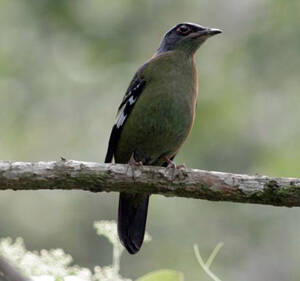
Green Cochoa, also known as Green Cochoa, is a bird of the family Thrushidae in the order Passeriformes, with no subspecies.The Green Broad-billed Thrush often moves alone or in pairs. During the spring and autumn migration seasons, it also gathers in small groups of several or more than 10 individu...
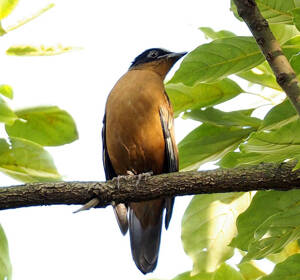
Purple Cochoa, also known as Purple Cochoa in English, is a bird of the genus Cochoa in the family Thrush family of the order Passeriformes, with no subspecies.Purple Broad-billed Thrush is quiet, timid and easily frightened. It moves in pairs or alone. It forages on the ground or among branches. It...
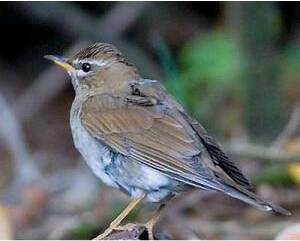
Grey-sided Thrush is a medium-sized bird of the family Thrushidae and the genus Thrush, with no subspecies.The lower body of the Brown-headed Thrush and the similar species White-browed Thrush (Eyebrowed Thrush) is orange-brown, and the male bird's head and neck are grayer; the White-bellied Thr...
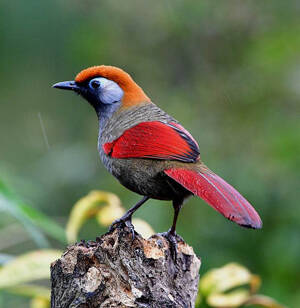
Red-tailed Laughingthrush, also known as Red-tailed Laughingthrush, has 4 subspecies.Red-tailed Laughingthrush often moves in pairs or in small groups of 3 to 5. It is timid and good at singing. Its singing is noisy. It hides in dense bushes at the slightest movement. You can often hear its voice bu...
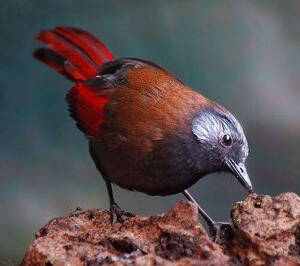
Red-winged Laughingthrush has two subspecies.Red-winged Laughingthrush often moves in pairs or small groups of several individuals, often shuttling and jumping between the undergrowth, and also frequently moving and foraging on the ground under the forest. It mainly feeds on insects and plant foods....

The foreign name of the brown babbler is Rusty Laughingthrush, and there are three subspecies. Dickinson (2003) divided the brown babbler (G.poecilorhynchus) into three subspecies. Some scholars believe that the named subspecies of Brown Noisy Babbler (G.p. poecilorhynchus) is significantly differen...
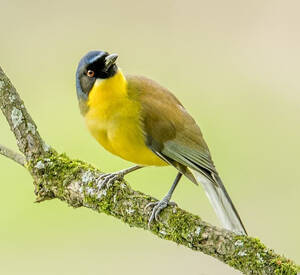
Blue-crowned laughingthrush is a small-bodied bird of the family Timalis, with no subspecies.There are dozens of species of Laughingthrush distributed in southern China. Although there are also rare species such as Chestnut-necked Laughingthrush and Brown Laughingthrush, the Indigo-crowned Laughingt...
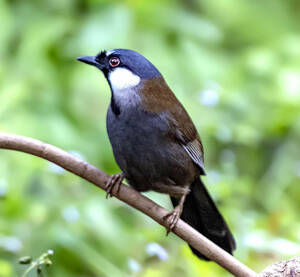
Black-throated Laughingthrush, also known as Black-throated Laughingthrush, has 5 subspecies.Black-throated Laughingthrush is a resident bird. It often moves in small groups of several or more than 10 individuals, and occasionally it is seen moving alone or in pairs. They often jump around in the bu...
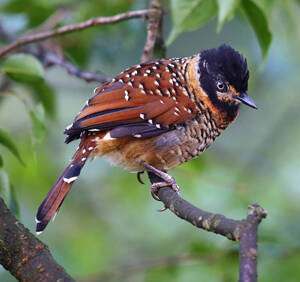
Spotted Laughingthrush, also known as Spotted Laughingthrush, has 4 subspecies.Eye-striped Laughingthrush often moves in pairs or small groups, mostly moving and foraging among the bushes under the forest or on the ground, and occasionally making calls of "Kagui, Gui, Gui..." During the br...
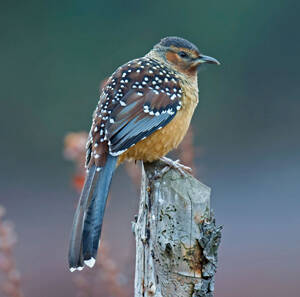
Giant Laughingthrush, foreign name, no subspecies.The Great Laughingthrush is smaller than the similar species, the Eye-striped Laughingthrush, and has a shorter tail. It has a black throat and neck, and black and white horizontal stripes on its chest. The difference is obvious and it is not difficu...
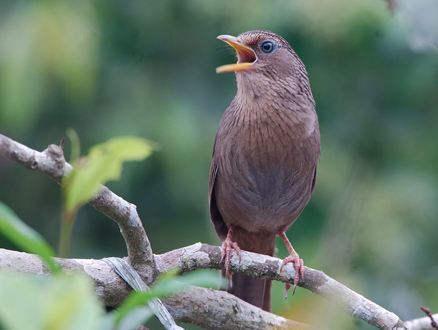
Taiwan Hwamei, no subspecies.Taiwan Hwamei males are very territorial, and the territory they occupy will not be invaded by males of the same species. If someone who does not know invades, he will be strongly driven away. They are sexually independent, and they gather in small groups in winter. It i...

The brown babbler's foreign name is Tibetan Babax, and there are two subspecies.The brown meadowlark and the speared meadowlark are very similar in body size and plumage color, making it difficult to identify them in the wild. However, the body feathers of the Spear-striped Babbler are grayish-b...
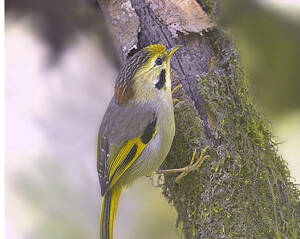
Gold-fronted Fulvetta is a species endemic to central and southern China.Gold-fronted Fulvetta was discovered and named by Mr. Ren Guorong in 1932. It is also the first wild bird named by a Chinese, and is a milestone in the history of bird research. The origin of the golden-fronted thrush is Dayao...
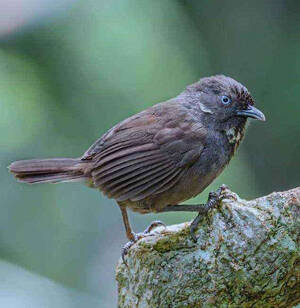
Nonggang Babbler, with no subspecies.In 2004, Professor Zhou Fang of the College of Animal Science and Technology of Guangxi University, funded by the National Natural Science Foundation, went to different regions of Guangxi for field investigations many times. In February, July, and October 2005 to...